Packaging, particularly sustainable, well-designed packaging, is an exciting and complex issue as PaperSpecs’ recent webinar showed.

“Great presentation, great samples and it’s very informative. Steve has shared a fountain of knowledge about packaging and branding. Thanks.”
“That was VERY interesting and informative. Steve was an excellent presenter and had some great ideas and examples. I am very glad to see a package designer of his stature pushing for more sustainable packaging. It is very heartening.”
But now, on to your questions and Steve Sikora’s answers!
What percentages of clamshells are recyclable?
Theoretically, 100 percent of clamshells are recyclable.
Some are made of recycling symbol #1 PET (Polyethylene Terephthalate), the same plastic used in water bottles, but most are made of recycling symbol #3 PVC (Polyvinyl Chloride), a more problematic material because of its additives.
PVC off-gases VOCs (volatile organic compounds) that can cause headaches, nausea and sore throats. PVCs contain phthalates, which are known endocrine disruptors that can cause harm to the reproductive systems of both males and females. Finally, PVCs contain the highly toxic chemical called dioxin, known to cause severe damage to one’s health: cancer, birth defects and endocrine disorders. Even so, it can still be downcycled (recycled into a lesser material use) into one type of plastic lumber. The other type is made of HDPE.
Typically, municipal recycling programs only collect #1 (PET) and #2 (HDPE) plastics. The accepted plastics must be in bottle form because they are the easiest to sort. In other words, very few clamshells ever get recycled because recycling programs don’t support their collection.
According to the National Recycling Coalition: “On average, it costs $30 per ton to recycle trash, $50 to send it to the landfill, and $65 – $75 to incinerate it.” Common sense and financial sense say that recycling is the smartest decision.
If it is more sustainable, uses less energy and is cheaper why aren’t we recycling more? I mean this from both the personal and cultural perspectives. It is possible that it is a lack of incentive. But the ultimate reason may be “human nature.” We are habitual. We are a little lazy. We are emotional. Emotional decision making is not governed by rational criteria.
As with pharmaceuticals, could clamshells go away for electronics if a printed card were on display? So that a customer brings the card to the register and receives the product then? The card looks like the eventual package but is less likely to be lost or stolen.
That is certainly one idea. Big box stores also use that strategy for cumbersome or heavy things like furniture that a customer can’t load safely into a cart on their own. A locking display case would achieve the same result. The downside for retailers is that this kind of security requires staff to manage it, and staff is expensive.
On the point of small things needing to be in large packaging, do you think that the current trend of using less packaging will change this?
High-theft items sold in unattended, mass-market environments require some form of security. Until another, cost-effective solution is found or until self-serve, mass-market retail changes, I believe we will continue to see excessive packaging. If it could be returned and reused, it may not be such a bad situation. Sort of like in the 80s, cassette tapes were sold with bulky plastic cases wrapped around them that were removed at the register and reapplied to new cassettes.
What was the reason for changing materials in the Coke bottle refresh?
I wasn’t responsible for it, but I can guess. Aluminum has plenty of advantages over plastics. It can be printed 360 degrees including the cap. Aluminum has much higher recycling rates than plastic. Although aluminum bottles have been around for a long time, no one has really done anything as dramatic as this. So newness is a big win. It is very likely that the aluminum material itself was the solution that allowed the best expression of the concept.
Do you make up a story for the client?
We help clients identify and tell the authentic stories of their origin.
Where is the line between good storytelling and too wordy?
Since the webinar is based on packaging, I am going to assume that you mean “too wordy for a package.” There is no single answer to that. From our perspective, we try to keep packaging very simple today. As consumers, our heads are so cluttered with information that we are in a state of near-constant overload. Remember, stories can be told visually as well as verbally. It is best to attempt to communicate as much as possible first on a sub-lingual level. In other words, through color, shape, texture, pattern and image, before applying typography. Having said that, take a look at Dr. Bronner’s Soap bottles. They are covered with words and the language is pretty dense. It reads like a religious tract. But those stories are the brand essence of Dr. Bronner’s. The brand would not exist but for them.
What would you do if the client is inexperienced and hasn’t figured out their brand story?
That is always the genesis of our work. Whether a client knows this or not, it is important for you, the designer to know it. The packaging is only an expression of the brand. It is not the brand itself. A product is physical. A brand is metaphysical. One is the body, and the other is the soul.
I have a technical layperson question. What are the color dots found on most packaging, and what is their function?
If we are referring to the same dots, they are there for quality control. Sometimes dots or other shapes are printed to show that inks match and the correct registration of inks.
Is shelf presentation most important in a brand launch? Graves’ things are now amidst its competitors.
Thus the redesign. The newer iteration is not as iconic as the original, but it lives in a very different environment than product packaging did at launch.
Does this take a certain kind of printer to get the good crack-proof scoring?
Have your Neenah Paper rep get you a copy of the promo for Environment Folding Board. There is a great technical sheet on scoring inside of it. Any reasonably skilled printer should be able to produce good scores with the right material, the correct approach and some testing.
How do they fit the Kleenex in the triangular box?
That’s one of those compelling attributes that makes you want to buy one and see for yourself.
What about shipping and delivery?
Most of the webinar was focused on the creative. There are a great many practical challenges to packaging. Sometimes the best packaging from the perspective of shelf presentation is not the best packaging for fitting a master pack shipper. A right-sized rectilinear form is usually going to be the best fit in a shipping carton. They require no inner compartmentalization as would glass bottles for example. It is a balancing act weighing the values of several variables at once. We are currently working with a company called Mobi. The particular product I am referring to is a pair of crutches (Mobilegs). At retail, the best and simplest way to package them is not a good configuration for shipping by container from the manufacturer overseas. Consequently, we made a decision to package the retail versions here in the United States.
I think that IKEA does a good job of minimizing shelf packaging by designing extremely good master cartons.
How is consumer safety considered when choosing package materials? I find hard plastics can cut.
I don’t think anyone is thinking particularly hard about clamshells from a consumer safety perspective. They are dangerous to open, for sure. The thinner the mil of the plastic sheet you specify, the easier it is to cut open. And, clams can be sealed in ways other than a totally welded seam. The sharp-edged seam can be deadly.
Can you recommend some resources on packaging (books, urls, blogs, etc.)?
The Dieline
DzineBlog
Package Design magazine
Packaging of the World
The Cool Hunter
Packaging Digest
Packaging World
Amazon.com has a great many packaging titles.
What criteria should we be aware of when designing packaging for the international market?
Governing regulations differ from country to country. Check local regulations before designing for an unfamiliar market. For instance, under the German packaging regulations, suppliers are obliged to take back and recycle up to 70 percent of their packaging and submit an audit to prove it. The alternative is Green Dot, a not-for-profit organization that recovers and recycles packaging put into circulation in Germany on behalf of its licensees. Packaging under this program is imprinted with a Green Dot designation.
How do women and men differ on what they like/dislike in packaging?
Men and women respond in packaging to what men and women respond to in all other areas of life. Since people identify with the products they choose, we are wise to carefully consider the primary audience for any product and devise a package that is a mirror to the “self” we are attempting to appeal to.
What about development of packaging that people can take with them and reuse for different items?
Reusable packaging can be a great solution to the waste problem. “Reusable” takes many forms, from refillable bottles to packaging that can be utilized for a secondary purpose.
In the webinar, I showed a slide of shoe packaging from Puma that substitutes a fabric bag for the traditional cardboard box. So long as everybody “bags” their shoes, that is a good solution. If people are more prone to storing (and stacking) out-of-season shoes in the original shoebox, and people dispose of the bags, it’s not. Nothing is terribly clear-cut. Conditions and human nature determine what the best idea may be.
I have a vision for my greeting card packaging! Can you provide some resources to go to for starters like me?
You could look into corn-based PLA plastics, or there are acetate folding carton boxes made of PET. Avoid the PVC boxes.
What about industrial packaging and prescription drug packaging, the non-retail world/mass marketing world…does the approach of packaging change?
Yes and no. Industrial, B to B and other forms of non-consumer packaging do not require the intense appeal that consumer packaging demands. One reason is that these packages are less likely to ever be seen on a shelf next to a competing product.
However, that said, I do believe that many industries have completely underestimated the values of brand in market spaces that are commoditized. We have had experiences over the years that tell us unequivocally that brand matters even at the level of the order desk, the delivery van and the shipping carton. Recognizable and distinguishing branding lends credibility at every level of contact.
Prescription drug packaging is another matter. I think that the rules of consumer packaging need to be followed, plus something that is currently missing from all health care fields needs to be integrated into it, that is a “sense of humanity.”
What is the newest in clamshell design to prevent theft and cuts on hands?
Typically, clamshells are sealed all the way around the perimeter. If they are hinged, the hinge acts as a seal on that side of the clam. Clamshells can be sealed by other means such as the button snap closures that you typically see on clear food containers. These can be supplemented with a secondary label to assure that the container was not opened. It is safer and easier to open, but far less secure than a welded flange. Once, we designed and tested a perforated strip into a clam that could be torn to gain safe access. Sadly, it did not go into production.
Do the biodegradable bottles pose any health risks to the consumers?
Enso Bottles say not. Microorganisms devour and breakdown the molecular structure of the plastics same as they breakdown anything organic in nature. I think dissolution through microbial action is very much the way we must handle waste going forward. It is how waste has always been handled in the natural world.
The downside of biodegradable plastics is that they are still petroleum products. Very soon, we need to move away from the petrochemical economy we are currently basking in. Oil is environmentally hazardous to source and is a finite resource that is being rapidly depleted. You may be surprised how dependent we are on it.
We are working on an animation about petroleum that we hope to post soon to our website at www.designguys.com.
How has e-commerce affected packaging?
It is much less important for online packaging to carry sales messaging and security features, but can we have special packaging forms for e-commerce only? It’s a thought. But I am unaware of any great movement to produce packaging unique to the delivery channel. Separate packaging for online transactions would be something else to manage in inventory.
I’d be interested to see your feedback on some packaging that has caused a backlash, such as Minute Maid a few months back.
I think that you may be referring to the Tropicana redesign fiasco. In sharp contrast, Duffy’s Minute Maid redesign has been heralded as successful. It looks fresh, crisp, bright and delicious. I love how the carton graphics link together when side by side on the shelf. To be honest I wouldn’t even have noticed that Tropicana had redesigned its packaging because it is invisible. I obviously passed through the cooler section, and it never registered. Instead, it took scores of outraged customers and critics shredding it in blogs for me to notice. That is pretty sad. It is absolutely remarkable to me that limitless budgets and consumer insights can produce a result that is so wrong. What happened to intuition? Gut reaction? Common sense? This is exactly the fate of so many soft drink brands and consumer packaged goods over the past couple of years. What looks like an impulse to change and rebrand your product at any cost. I understand the desire to cast off the old-world, CPG design clichés, but am confused that no one noticed that in the end, nothing of any value remains. Proof that there is a difference between simple and simpleton.
Do you have any reliable packaging printers you could recommend?
Well, I just plain don’t recommend unreliable printers.
Depends on the type of packaging. We have used Johnson Printing and Packaging in the Minneapolis area for folding cartons. Corrugate printers are completely different. Bottling companies are different again. These resources are available nationwide. These days, so many things are produced overseas that your client or the product supplier may be choosing your printer for you.
What makes EcoPure biodegradable?
It is the addition of what EcoPure calls “organic nutrients” that allow microbes to break the synthetic polymer chains into organic monomers, which are then completely biodegraded by microbial action. A bottling company that uses the product is Enso Bottles.
Are there any materials we can purchase, i.e. the ten functions of a package?
I wish. Here is the checklist from the presentation:
1. Protection — How your package protects its contents
2. Organization — How your package arranges or manages the bits and pieces
3. Theft Deterrence — How your package keeps the product safe prior to sale
4. Display — How your package flaunts the product to best advantage
5. Branding — How your package defines true character
6. Marketing — How your package helps sell the product
7. Prestige — How your package elevates the product
8. Shelf Presentation — How your package contributes to a greater brand statement
9. Experience — How your package touches the customer’s senses
10. Authenticity — How your package expresses true essence
What should packaging cost be relative to cost of your product?
Excellent question, as with so many things there is no simple answer. In some cases, a simple sticker might be .05 percent of your cost of goods. In the cosmetic industry or software, packaging might be several hundred times the cost of the product. The packaging cost increases in direct proportion to the value of the product being packaged.
Do you have any examples of how packaging materials for real estate have improved?
It seems to me that short run digital printing has changed everything on both the low end and high end of the spectrum, when it comes to real estate.
 |
To listen …If you missed “Packaging: Tying It All Together,” it’s not too late! Just click here to listen to the full webinar.
|
Please post a Comment to this Tip – and let others benefit from your wisdom. Thanks


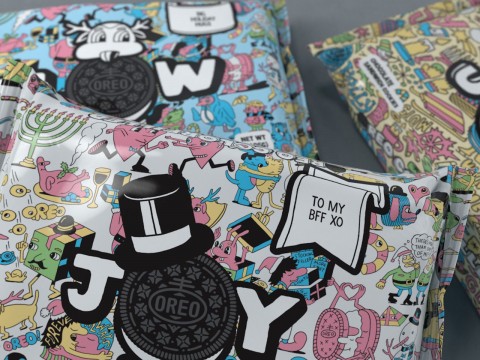
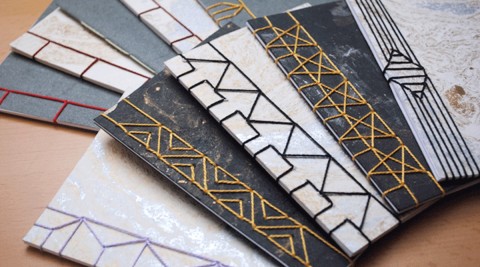
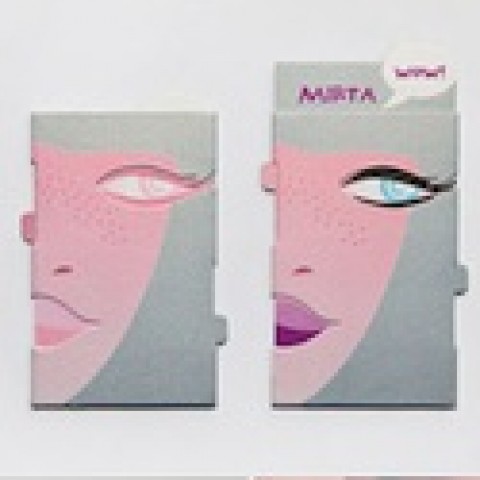
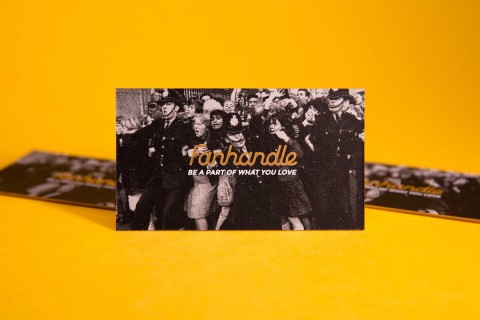

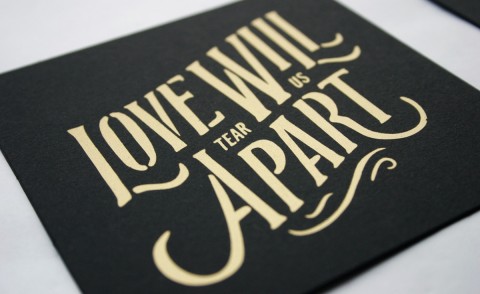




Thanks for your input … your responses to these questions were very informative.